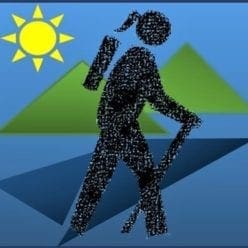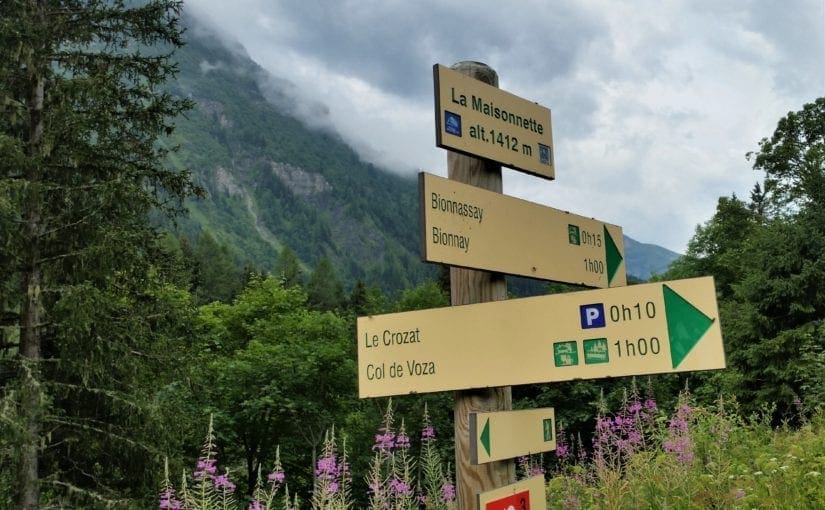Most recently updated January 18th, 2022
Estimated Reading Time: 10 minutes
Whether you’re exploring in the wilderness or taking a fitness jog in a county park, it’s not unusual to find evidence of other people who’ve visited before you.
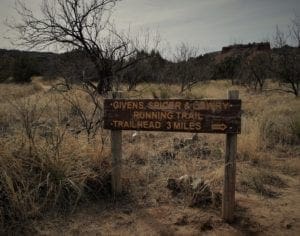
Most often it’s in the form of trail signs giving practical information.
Sometimes personal tokens are left in an attempt to send a wish or a prayer to a loved one, or even to make contact with some greater universal entity.
You might also see official tributes to people who have contributed in some way to that green space.
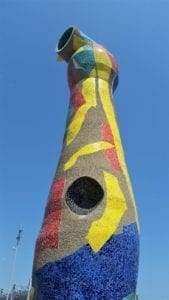
Or more simply, art.
Whatever it is and whoever it’s for, signs and tokens left along the trail are an attempt to communicate with others.
PRACTICAL COMMUNICATIONS
When people hear the word “trailblazer”, they think of innovators – maybe scientists or artists – who discovered or created something new for their time.
In hiking terms, a “trailblazer” is the first person to establish a trail for other hikers, allowing them to follow a proven safe path.
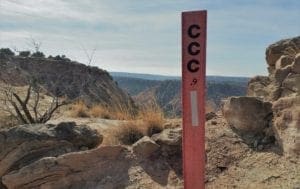
Trail markings serve such an important purpose to outdoor explorers that the U.S. federal government actually mandates their use.
Some of my posts contain affiliate links. If you make a purchase through an affiliate link, I will receive a small payment at no additional cost to you. I do not get paid for recommendations, all opinions on this site are my own. See full Disclosure page here.
The National Trails System Act, passed in 1968, requires national trail agencies and private trail stewards to keep trails clearly marked.
Today’s National Parks hikers rely on signs to provide destination and distance information along the route.
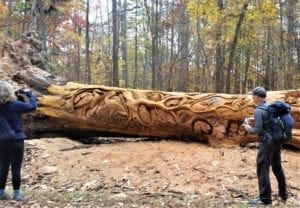
HERE’S YOUR TRAIL SIGN
A trail “blaze” is a type of sign whose sole purpose is to reassure hikers that they are still on the trail.
It can be very basic, like a spot of paint on a tree or rock. It can also be more elaborate, like a cairn or what looks like a wooden street sign.
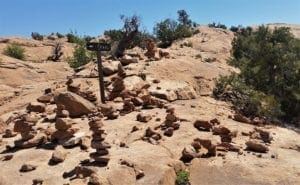
A cairn is a human-made pile (or stack) of stones. Cairns have been used from prehistoric times, most usually as a trail marker or a memorial.
Hikers in wilderness areas are very glad – and sometimes quite relieved – to see the occasional cairn, pointing in the right direction at critical junctions on the trail.

In ancient Norse Greenland, cairns were used in hunting to direct reindeer towards a game jump.
In the United States and Canada to this day, cairns still mark game-driving lanes leading to buffalo jumps, some of which may date as far back as 12,000 years ago. In Scandinavia, cairns have been used for centuries as blazes on both land and sea.
All over the world, these stone trail markers clearly have been and still are very important to the people that rely on them.
CAIRNS TO NOWHERE – STACKING STONES
Unfortunately, a new practice has become popular in our wild spaces: People are stacking rocks for unknown reasons, probably as some kind of “spiritual” expression.
I have personally been confused by pointless cairns at National Parks in both Utah and Maine. These random stone piles aren’t real cairns, but they are creating a real problem.
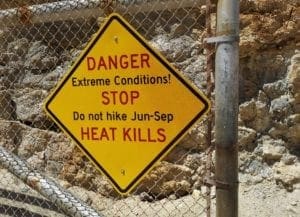
First, they can lead an unsuspecting hiker into trouble, away from the trail (and the real trail markers) into a potentially dangerous situation.
Second, when we are in the wild, we should follow the Leave No Trace philosophy – and that means not littering the wilderness with unwanted reminders of humanity, even if they are made of stacked stone.
In earlier times, Native Americans lashed the limbs of maple saplings and tied them in place to mark a trail.
French-Canadian voyageurs also created “lop trees” to mark their portages and guide them through the maze of waterways along the Minnesota-Ontario border.
Can you imagine what kind of danger they might have faced if the trail had been altered with misleading markers?
It’s just as dangerous for today’s hikers. Please don’t stack stones on the trail – create cairns in your gardens at home instead, where you can see them every day!
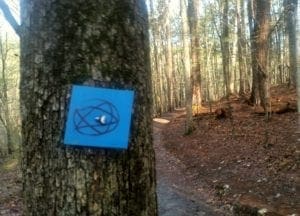
I’ve seen other kinds of modern trail signs defaced with graffiti.
If you run into anything like this, please notify a Ranger and discourage others from vandalizing blazes and other informational signs – they’re put there to help outdoor explorers (like you!) find their way.
Or, if you’re a tagger, save your art for signs at home.
No matter what form trail blazes take – cairns, bent twigs, or modern blazes and signs – their ultimate goal is to communicate two important pieces of information: where a hiker is currently, and where he needs to go next.
MEMORIALS AND TRIBUTES

In Gaelic, the word “cairn” means “mound of stones built as a memorial or landmark.”
We’ve already talked about the use of cairns as trail markers, but they can also be used to mark a burial site, or as tribute to an achievement.
Burial cairns and other megaliths are the subject of a variety of legends and folklore throughout Britain and Ireland.
Though there are plenty of burial cairns in Celtic territories, they aren’t exclusive to that culture – indigenous peoples in the United States often used cairns to cover and bury their dead.
In Scotland, it is also traditional to carry a stone up from the bottom of a hill to place on a cairn at its top – and in that way the memorial or tribute is ever growing.
The practice of mountaintop cairns is an ancient one, and in many cases these stone piles mark actual ancient burial sites.
In modern America, these nature-based memorials aren’t usually actual graves, just places to remember loved ones who have passed on – often in a location that was significant to them in life.
NOTE: Memorial cairns are usually of different size and type than trail marker cairns, and also far from marked trails.

I’ve come across other modern trail-side memorials as well – a painted stone, a cross, a bunch of flowers – that remind me of the spontaneous roadside memorials that so tragically decorate our highways.
TOKENS AND WISHES

A wish tree – or “clootie” tree – is thought to possess a special religious or spiritual value, and is used as an object of wishes and offerings.
Offerings are left in hopes of having a wish granted, or a prayer answered, from a nature spirit, saint or goddess, depending on the local tradition.
The practice of wishing on a clootie tree has pre-Christian roots, potentially stretching back many thousands of years. The best known surviving example is located just north of Inverness, on The Black Isle at Munlochy.
I unexpectedly found a modern version of a clootie tree along Pioneer Cemetery Trail in Glenwood Springs, CO up the steep hill to the Linwood Cemetery. At first we were confused, so we asked around a bit.
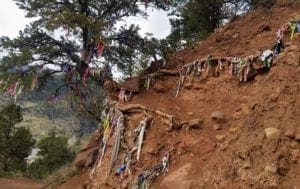
As it turns out, “Annie’s Wishing Tree” was started by a local woman, Annie Zancanella, a couple of years ago while undergoing cancer treatments.
She has continued to add ribbons from herself, and from children at the children’s hospital.
Annie says everyone is free to add their own ribbons, and asks only that people be respectful of others already in place.
When used at the clootie wells in Scotland, pieces of cloth (known as “clooties”) are dipped in the water of a holy well and then tied to a branch while a prayer of supplication is said – usually related to healing some illness in the supplicant or someone dear to them.
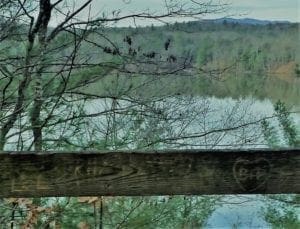
The local custom at Annie’s tree includes tying ribbons or strings of beads to a branch or exposed root, along with a written wish or (as we found when we read a few of them) very heartfelt curses!
There doesn’t seem to be a patron saint associated with the tree, so the wishes are apparently sent out the the Universe in general.
Annie’s modern wish tree doesn’t appear to be an isolated incident: One day when I was hiking in Umstead State Park, I found a handwritten note tied by a ribbon to a bridge railing. It was a note to a Lost Love, sent out to the Universe as an appeal to find him again.
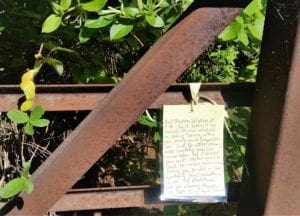
This sort of wishful thinking has also found it’s way into modern city spaces, notably in the ‘love locks’ that until recently adorned the Pont des Arts in Paris – echoing these much older traditions.
Since 2008, visitors have been attaching locks to the bridge as a symbol of affection – apparently inspired by a 2006 movie. (I saw a bridge similarly covered with locks in Chamonix, France when I was hiking near Mont Blanc last summer.)
It was considered charming at first, but the charm faded as sections of fencing on the Pont des Arts crumbled under the locks’ weight.
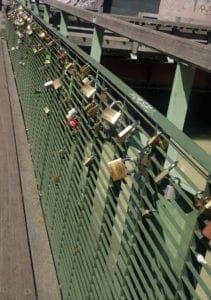
Similarly (though much earlier), Scotland introduced an Act of Parliament in 1581 which made pilgrimage to holy wells illegal.
Some clootie wells and trees survived, but only after converting to the patronage of Christian saints.
Today, the surviving clootie trees are heaped with rotting rags which – if made with modern synthetic fibers – will take a long time to degrade.
If you ever do visit a clootie tree, it is recommended that you only hang offerings made from wool or cotton.
WHY DO WE LEAVE TOKENS?
Leaving memorials or wish tokens is a human act that seems to be both global and timeless – from mountaintops to bridges, ancient to modern times, old Norse Greenland to modern USA.
Trail markings (cairns and blazes) are also global and timeless, but they serve a practical purpose.
What fuels this universal impulse to leave tokens in the wilderness as an uncertain form of communication with the unknown?
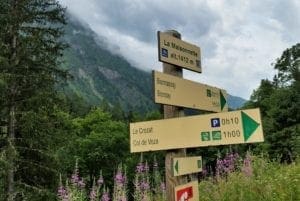
Something about natural areas like parks and mountains seems to encourage creative ways to honor the dead (or others far away from us) that would not be considered appropriate in most cemeteries or other conventional civilized spaces.
The simple act of piling up stones, leaving a special rock or cross, is a way to simultaneously reach out to and let go of those whom we have lost – releasing them to the vast unknown, personified by the wilderness.
In the same fashion, using prayer or wish sites – modern “clootie” trees, bike locks on bridges or notes tied to trail-side shrubs – is similar to the hopeful gesture of sending a message in a bottle down a mountain stream.
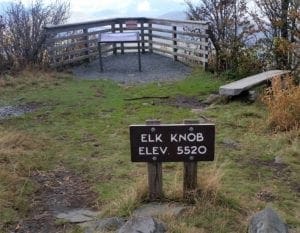
When we are in Nature, outside of our regular lives and the rules of society, it seems we feel more free to create and display tangible tokens of (what are today, sadly) “uncool” feelings of hope, optimism and the possibility of something larger than ourselves.
I’m in favor of hope and optimism, but please leave trail blazes alone: your creativity may interfere with other hikers’ ability to get back home again safely.
If you have run across any unusual trail-side signs or memorials, please drop me a note to share.
Thanks for stopping by – see you next time! LJ
To Get New Idratherwalk Posts
sent directly to your inbox (how convenient!) Click this Button
If you like this post, please share it!
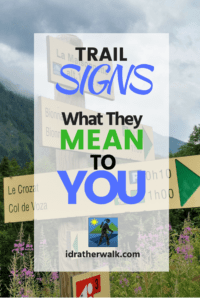
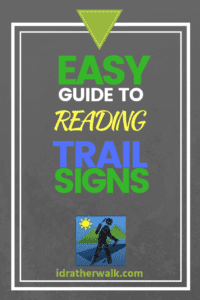
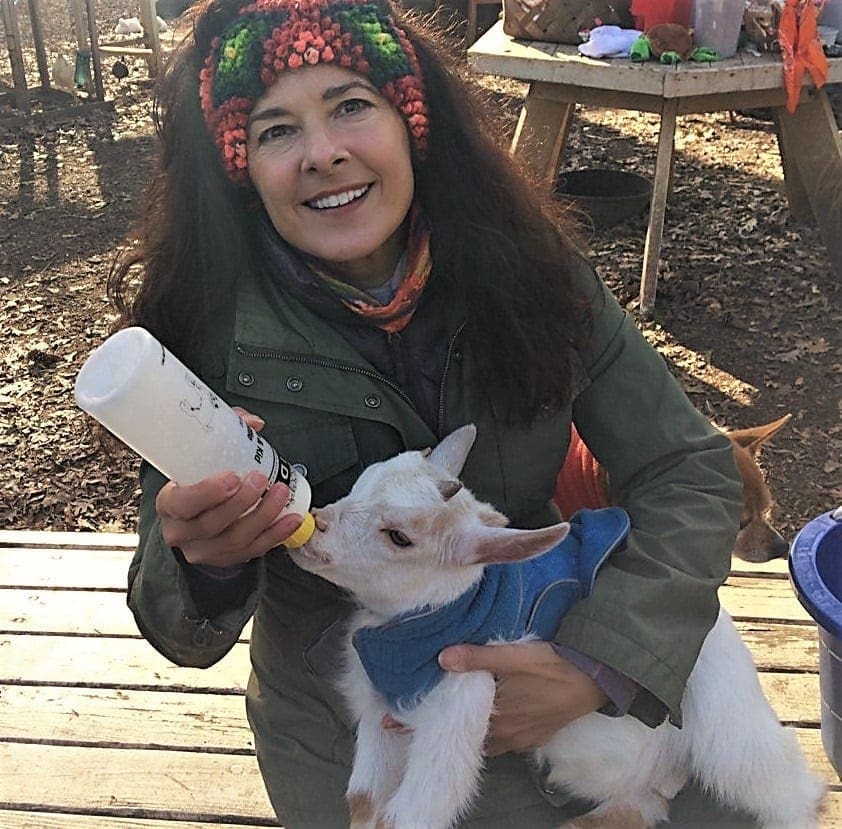
LJ has spent much of her free time as a single Mom – and now as an empty-nester – hiking in the US and around the world. She shares lessons learned from adventures both local and in exotic locations, and tips on how to be active with asthma, plus travel, gear, and hike planning advice for parents hiking with kids and beginners of all ages. Read more on the About page.
